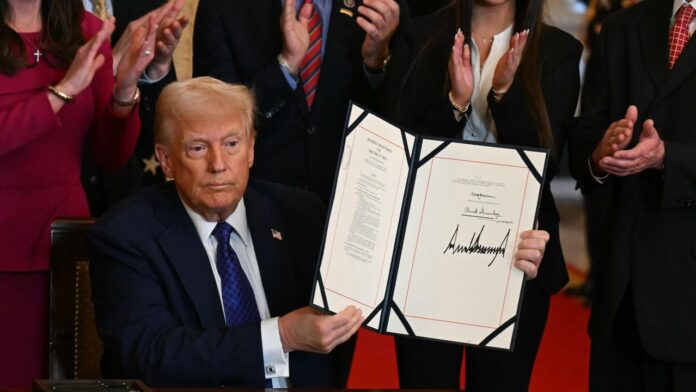United States President Donald Trump announced on Wednesday (local time) that he will sign an executive order to prepare a migrant detention facility at Guantanamo Bay, The Hill reported.
30,000-Person Facility Planned
The order will instruct the Department of Defense (DoD) and Department of Homeland Security (DHS) to establish a 30,000-bed facility at the US naval base in Cuba.
Guantanamo Bay has historically housed military prisoners, including individuals involved in the 9/11 attacks.
“We have 30,000 beds in Guantanamo to detain the worst criminal illegal aliens threatening the American people,” Trump said while signing the Laken Riley Act into law.
“Some of them are so bad we don’t even trust the countries to hold them because we don’t want them coming back, so we’re going to send them out to Guantanamo,” he added. “This will double our capacity immediately. And tough, it’s a tough place to get out of.”
Guantanamo Bay and Immigration Policy
The Guantanamo Bay facility has been controversial due to allegations of torture and abuse of detainees in the US war on terror. Former President Joe Biden had scaled down its operations, leaving only 15 detainees at the site.
Trump’s executive order is part of his broader crackdown on immigration, including a series of actions taken since returning to office.
Changes to Immigration Policy
- Refugee Ban: Trump suspended the US refugee admissions program, blocking entry for refugees from countries like Ukraine, Afghanistan, Venezuela, and Haiti.
- End of Humanitarian Parole: The administration halted programs allowing individuals entry on humanitarian or public interest grounds, affecting Afghan, Ukrainian, Cuban, Haitian, Nicaraguan, and Venezuelan refugees.
- CBP One App Shutdown: The mobile app, which allowed migrants in Mexico to apply for scheduled entry into the US, was shut down.
- Parole Revocations: Immigration and Customs Enforcement (ICE) has been directed to revoke parole status for over 530,000 migrants from Cuba, Haiti, Nicaragua, and Venezuela, along with nearly one million migrants who used the CBP One app under the Biden administration.
These policies mark a significant shift in the US immigration system, as Trump continues to push for strict border control measures.


